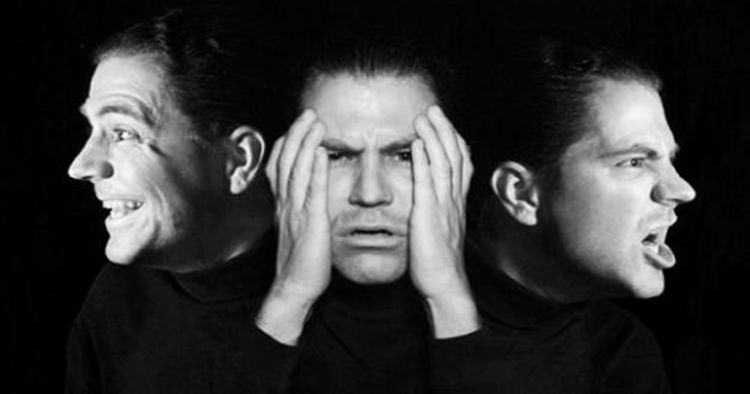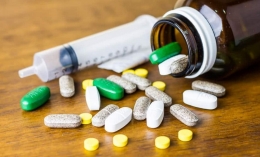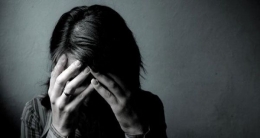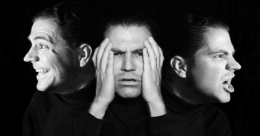What is Schizophrenia?
Schizophrenia is a mental disorder that occurs in the long term. This disorder causes sufferers to experience hallucinations, delusions, thought disorder, and behavior changes. These symptoms are symptoms of psychosis, a condition in which the sufferer has difficulty distinguishing reality from his own mind.
Schizophrenia is often equated with psychosis, even though the two are different. Psychosis is only one symptom of several mental disorders, including schizophrenia.
According to WHO, it is estimated that more than 21 million people worldwide suffer from this mental disorder. Schizophrenics also have 2-3 times higher risk of dying at a young age. In addition, half of the schizophrenics are also known to suffer from other mental disorders such as drug abuse, depression, and anxiety disorders.
Schizophrenia Symptoms
Early symptoms of schizophrenia generally appear in adolescence. Therefore, these early symptoms are often misinterpreted, because they are considered normal in adolescence. In men, the initial symptoms appear at the age of 15-30 years. On the other hand in women, symptoms usually attack the age group of 25-30 years.
A number of early schizophrenia symptoms are:
- Tend to isolate themselves from others.
- Easily angry and depressed.
- Changes in sleep patterns.
- Lack of concentration and motivation.
- Difficulties in doing school work.
The schizophrenia symptoms are divided into two categories, positive and negative. Positive symptoms refer to behaviors that are not visible in healthy individuals, including:
- Hallucination. It is the feeling of experiencing something that feels real, but actually that feeling only exists in the sufferer's mind. For example, feeling heard something even though other people did not hear anything.
- Delusional. Delusion is to believe something that is contrary to reality. Symptoms vary ranging from feeling watched or followed. Most schizophrenics experience these symptoms.
- Chaotic in thinking and talking. These symptoms can be known from the difficulty of sufferers in speaking. Schizophrenics find it difficult to concentrate even reading a newspaper or watching television. Their way to communicate is also confusing. So, it is difficult for the other person to understand.
- Chaotic behavior. The behavior of schizophrenics is difficult to predict. Even the way to dress is also unusual. Unexpectedly, sufferers can suddenly scream and get angry for no reason.

Often, patient and family relationships are damaged by negative symptoms. This is because negative symptoms are often misinterpreted as being lazy or disrespectful. Negative symptoms generally appear gradually and get worse over time, including:
- Odd emotional responses such as facial expressions and tone of speech that does not change (monotonous).
- Hard to feel happy or satisfied.
- Reluctant to socialize and prefer to stay at home.
- Loss of interest and motivation in various activities, such as having a relationship or having sex.
- Changing sleep patterns.
- Not comfortable being around other people and not wanting to start a conversation.
- Do not care about appearance and personal hygiene.
Schizophrenia Causes
The cause of schizophrenia is not known with certainty. However, this mental disorder is associated with a number of risk factors, such as:
1. Genetic Factors
Someone from a schizophrenic family, 10% more risk of experiencing same condition. The risk will be 40% greater if both parents have this mental disease. People who have twin siblings with schizophrenia have the risk increase to 50%.
2. Brain Chemical Factors
Research shows that an imbalance of dopamine and serotonin levels can lead to schizophrenia. Dopamine and serotonin are part of neurotransmitters, chemicals that function to send signals between brain cells. There are differences in brain structure and function in schizophrenics. These differences include:
- Connections between brain cells are fewer.
- Smaller temporal lobe size. The temporal lobe is the part of the brain associated with memory.
- Larger brain ventricular size. The ventricle is the part in the brain that contains fluid.
3. Pregnancy and Childbirth Complications
A number of conditions that occur during pregnancy are thought to be at risk of causing schizophrenia in children born. Among these are lack of nutrition, exposure to toxins and viruses, preeclampsia, diabetes, and bleeding during pregnancy.
Complications during childbirth are also at risk of causing this disease in children. For example lack of oxygen at birth (asphyxia), low birth weight, and premature birth.
Some other risk factors are:
- Increased immune system due to autoimmune diseases and inflammation.
- Brain injuries due to falls or accidents, including those that occur in childhood.
- Viral infections, especially influenza and polio viruses.
In people with the factors mentioned above, stress is the most important psychological factor that can trigger schizophrenia. Stress can occur due to divorce, loss of work or place of residence, and being left by a loved one. Sexual harassment or physical and emotional abuse can also cause stress.
Moreover, drug abuse such as cocaine, cannabis, and amphetamines can also trigger this mental disease in people with the above risk factors. Research shows, cannabis addicts are 4 times more likely to develop schizophrenia.
Schizophrenia Diagnosis
To diagnose schizophrenia, the following criteria are used:
- Patients experience minimum of two of the following symptoms: delusions, hallucination, speech disorder, chaotic behavior, and negative symptoms. At least, one of the two symptoms that must be present is delusions, hallucinations, and speech disorder.
- The symptoms above must be experienced by the patient, for at least 6 months. Moreover, their work and social life are disrupted.
- The above symptoms are not caused by other mental disorders, such as bipolar disorder, or drug abuse.

Complications
If left untreated, this disease can lead to a number of serious complications, such as:
- Think and try to kill yourself.
- Depression.
- Phobias.
- Self-harm.
- Drug abuse and alcoholism.
- Aggressive and rowdy behavior.
Schizophrenics can also have problems in relationships with family and the environment. So, they choose to isolate themselves. In addition, the symptoms experienced can make it difficult for sufferers to work, which can have a negative impact on their financial condition.
Treatment
Until now, there has been no cure for schizophrenia. Treatment methods are only limited to controlling and reducing symptoms in patients. Some of these treatment methods are:
1. Drugs
To treat hallucinations and delusions, your doctor will prescribe an antipsychotic drug in the lowest possible dose. Antipsychotics work by inhibiting the effects of dopamine and serotonin in the brain. Patients must continue taking antipsychotics for a lifetime, even though their symptoms have improved.
Antipsychotic drugs can be given in tablet or injection form. The form of the drug given depends on the patient's willingness to be treated. In patients who are easily managed, the doctor will give an antipsychotic tablet form. But in patients who are difficult to be given antipsychotic tablets, doctors will give injectable antipsychotics. Some side effects of antipsychotic drugs that can appear:
- Gain weight
- Decreased sex drive
- Convulsions
- Dry mouth
- Blurred vision
- Dizzy
- Tremor
Antipsychotics are divided into typical types (old generation) and atypical (new generation). At present, doctors recommend atypical antipsychotics, because they have fewer side effects than typical antipsychotics. Some typical types of antipsychotics are chlorpromazine, fluphenazine, and haloperidol. While atypical antipsychotic types include aripiprazole, clozapine, olanzapine, and risperidone.

2. Psychotherapy
Psychotherapy aims to make the patient able to control the symptoms they experience. This therapy will be combined with medication. Some psychotherapy methods, including:
- Individual therapy. In this therapy, the psychiatrist will teach the patient's family and friends, how to interact with the patient. One of the ways is to understand the patient's mindset and behavior.
- Cognitive-behavioral therapy. This therapy aims to change the patient's behavior and mindset. The combination of cognitive-behavioral therapy and drugs will help patients understand the triggers of hallucinations and delusions and teach patients how to overcome them.
- Cognitive remediation therapy. This therapy teaches patients how to understand the social environment, as well as improve the ability to pay attention or remember something and control their thought patterns.
3. Electroconvulsive Therapy
Electroconvulsive therapy is the most effective method to relieve suicidal ideation, overcome symptoms of severe depression, and treat psychosis. Therapy is done 2-3 times a week, for 2-4 weeks, and can be combined with psychotherapy and drug administration.
In this therapy, patients will be given general anesthesia and drugs to make the patient's muscles more relaxed. Then, the doctor will install electrodes on the patient's fontanel. Low electric current will flow through the electrodes, and trigger brief seizures in the patient's brain.
Baca konten-konten menarik Kompasiana langsung dari smartphone kamu. Follow channel WhatsApp Kompasiana sekarang di sini: https://whatsapp.com/channel/0029VaYjYaL4Spk7WflFYJ2H









